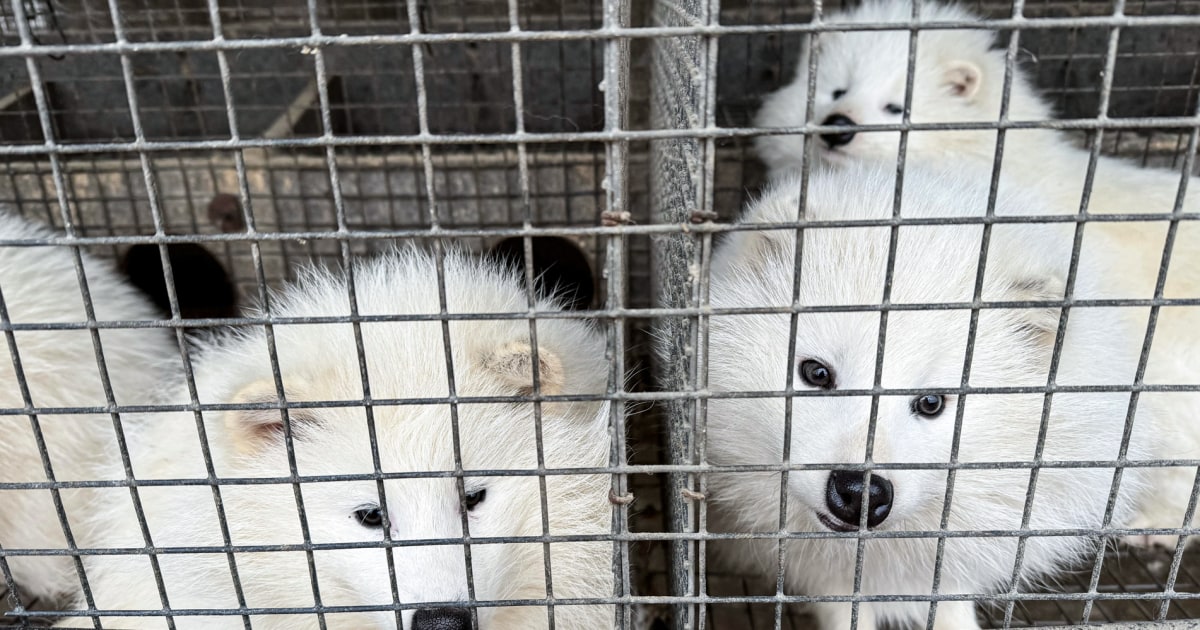- Click to share on Facebook (Opens in a new window)
- Click to share on Twitter (Opens in a new window)
- Click to share on LinkedIn (Opens in a new window)
- Click to email a friend (Opens in a new window)
Thorough cleanup on planes by coronavirus 1:46
(CNN) - Aviation is fighting for its survival. Cruises are in ports. As the pandemic grows, the travel industry faces an uncertain future and is struggling to adapt.
Those planes flying in the midst of the pandemic are now subject to stricter hygiene protocols than ever, but when the threat of the virus finally wears off, the transportation industry will face deep concern over infections.
Immediately after the global outbreak, airlines took stringent measures ranging from the mundane, such as stopping hot towel service, to the extreme, such as cleaning an entire plane with disinfectant.
- Commander of Aircraft Carrier Hit by Coronavirus Outbreak Warns Navy 'Decisive Action' Needed
As more data is available on how the virus spreads, the measures can be further expanded. Some aspects of the aircraft cabin design may even be reconsidered.
So what can passengers expect in the future to give them peace of mind about the spread of the disease?
While it is clear that aircraft have accelerated the spread of the virus by transporting infected passengers across continents, the risks of transmission within the cabin are less well known.
Moving inside the plane
Sitting two rows from an infected person on a flight is defined as a primary risk factor according to World Health Organization (WHO) guidelines, but passengers moving during a flight could increase the potential for transmission. On a particularly unfortunate flight during the 2003 SARS outbreak, a passenger infected 22 of 120 people on board, suggesting that some outside the two-row distance zone are also in danger.
However, a team of researchers who studied passenger behavior on 10 transcontinental flights in 2018 found that although 62% of travelers moved while in the air, none of the 229 surface and air samples collected gave positive in respiratory diseases.
"We were a little surprised by this because we had 10 flights and eight took place during what's called the flu season," said Vicki Stover Hertzberg, biostatistian at Emory University in Atlanta, who led the study.
- Flying in times of the coronavirus
"What we did find was that the bacteria on a plane look a lot like what you would find in your home, in your office, or in places that people normally frequent.
She said cases where someone gets sick from contact with someone on a plane are few and far between.
"Most air travel infections are due to someone infected having been transported from point A to point B," he said.
However, Hertzberg says the new hygiene measures the airlines have are necessary and applauds them.
"I hope this will make people pause," he says of the outbreak. “Several years ago there were proposals for things like non-contact toilet entry and contactless toilets in general. But airlines would have to incorporate that while they buy these planes. "
Commuters in Miami: situation is complicated by COVID-19 2:55Filtered air
Modern aircraft are equipped with special filters, called HEPA, whose efficiency is similar to that used in hospital operating rooms. The air inside the cabin is a uniform mix of fresh, recirculated air from outside.
"Although the passenger density is very high, the air in the ventilation system is very clean, because HEPA filters can block particles with a diameter of 0.3 microns or more, with an efficiency of 99% or more," says Qingyan Chen, a professor of mechanical engineering at Purdue University in Indiana, who has investigated the spread of air particles in passenger vehicles and how to track them.
However, Chen argues that this does not mean that all the air inside the cabin is clean, because a person who sneezes, coughs, speaks, or breathes emits drops that could be transmitted to nearby passengers before the HEPA filter has a chance to catch them.
That is why he proposed a new type of ventilation system that creates a wrap of filtered air around each passenger, without mixing it with the air exhaled by the neighbors.
Chen's design uses a dedicated HEPA filter for each seat, located in the footwell where today's entertainment boxes already reside. The clean air that comes out of this box is colder than the cabin air, but each passenger's body warms it up a bit, raising it to the level of the mouth. The exhaled air, even warmer and potentially polluted, rises further towards the ceiling, where it is captured by the vents and largely expelled.
"This type of design is the opposite of current designs, which supply air from the top and mix it as much as possible in a centralized system," said Chen, who tested the system on a seven-row section of a Boeing 737, with encouraging results.
However, given the level of trust airlines have in their current filtering systems, it could be difficult to convince them in the absence of more evidence.
Boarding procedures
The overall risk of contracting an infectious disease on a plane, according to the International Air Transport Association (IATA), is lower than in other confined spaces.
"So far (...) we have only a very small number of cases in which a passenger may have transmitted (covid-19) to a crew member, and none of the passengers has transmitted to another passenger," says the medical adviser. from IATA, Andrew Powell.
- 12 changes to the US immigration system during the coronavirus pandemic
"This could be due to a variety of factors including high cabin airflow rates, relative lack of contact between passengers, lack of face-to-face conversations, and widespread awareness of avoiding flying without being well."
There are far more cases, he says, of infected crew members at home or at stopover destinations.
Other parts of a flight can also be more dangerous than the time you spend on the plane itself, such as the boarding process, which often brings people together.
In response to the 2014 Ebola outbreak that grounded many flights, a team of researchers studied alternative ways to board a plane that had a lower risk of transmitting infections.
Meeting passengers randomly, rather than by rows or groups, was found to reduce the risk of contagion, because people were less likely to spend long periods of time close to each other. The only cost? A longer wait.
"This is an interesting area that some airlines are already starting to try to adopt," Powell said. "Although the aircraft is a highly controlled environment, the boarding process is much less. If the flight occurs when the covid-19 is still circulating, it may be important to achieve methods to ensure a physical distance of 1.5 meters during this process, which would mean starting with those furthest from the front door, so controlled and sequenced ”.
Boats are 'incubators'
Two cruises stranded by Covid-19 3:21Cruises were the hardest hit by the coronavirus, with more than a dozen outbreaks leading to all major lines halting operations. The largest group of infections was on board the Diamond Princess, where almost 20% of those on board were infected with covid-19.
"Cruise ships in principle look like a building, so their air conditioning systems are similar to those of buildings," says Qingyan Chen. "There is nothing wrong with that under normal circumstances, but with a viral outbreak it is a problem, because the filters they use do not block viruses."
That means that ventilation systems may have spread the virus from one cabin to the next, by recirculating the polluted air that contained small droplets expelled by sneezing or coughing passengers.
Coronavirus can survive up to three hours on these drops, called aerosols, as well as up to three days on surfaces like plastic or metal, according to research by the United States National Institutes of Health.
Chen believes that some of the infections aboard the Diamond Princess may have occurred in this way, since they occurred after passengers were quarantined, when direct contact between people was reduced.
"The quickest solution is to convert all the filters to HEPA filters, and I think it could be done easily," he says.
The Diamond Princess outbreak has become a case study that could inform our understanding of how the virus spreads.
Looking at the ship's infection data, the London School of Hygiene and Tropical Medicine has hypothesized how things could have been different.
Of 3,711 passengers and crew on board, more than 700 were infected during a 14-day quarantine imposed on the ship by the Japanese authorities in the port of Yokohama.
Outbreak scenario
If everyone on board had been evacuated immediately after discovering the outbreak, only 76 people would have become ill, according to the study. However, if the quarantine had not been instituted at all and everything had been allowed to proceed normally, almost 3,000 people would have contracted the virus.
"Quarantine worked, it's important to say," says Annelies Wilder-Smith, who led the study. “But, in hindsight, it would have been better to evacuate immediately. Obviously, this was all happening when we were still learning about the covid-19.
"We can't blame anyone and I don't think any mistakes have been made. But we have learned in the future that if you have an outbreak on a cruise ship or in any other confined environment, you must remove people from that environment. ”
Cruises are unique in that they are a confined space where people are constantly mingling, which is worse in an outbreak scenario than even in a metropolis where density is also high but there is less mixing.
"Unlike planes, cruise ships are massive incubators of disease. A single case can trigger an outbreak, ”said Wilder-Smith. “The question is, how do you reinstate the confidence and economy of cruise ships without completely containing the virus? The industry may have a problem for next year. "
coronavirus














